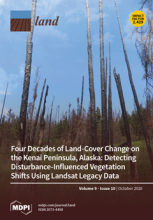Land Library
Welcome to the Land Portal Library. Explore our vast collection of open-access resources (over 74,000) including reports, journal articles, research papers, peer-reviewed publications, legal documents, videos and much more.
/ library resources
Showing items 10 through 18 of 25.The near elimination of inland salt marshes in Central Europe occurred throughout the 19th and 20th centuries, and the currently remaining marshes exist in a degraded condition.
The rain gardens at Bryggen in Bergen, Western Norway, is designed to collect, retain, and infiltrate surface rainfall runoff water, recharge the groundwater, and replenish soil moisture.
The nexus of food, energy, and water systems (FEWS) has become a salient research topic, as well as a pressing societal and policy challenge. Computational modeling is a key tool in addressing these challenges, and FEWS modeling as a subfield is now established.
Due to water scarcity, which is worsening due to climate change, rural areas often face the challenge of rural exoduses. Limited water resources restrict local farmers as the opportunities for cultivation in the fields are reduced. This makes rural areas increasingly unattractive.
Aiming to store water in wet seasons and outflow water in dry seasons, and improve reservoirs’ performance, are of great importance. Given the developmental disparities across regions and uneven precipitation within one year, water transfer could be an efficient solution.
The Franks Tract State Recreation Area (Franks Tract) is an example of a complex contemporary park mired in ecological and socio-political contestation of what it is and should be.
In today’s agriculture, maize is considered to be one of the major feed, food and industrial crops. Cultivation of maize by inappropriate agricultural practices and on unsuitable sites is connected with specific risks of soil degradation, mainly due to water erosion of the soil.
Reductions in water availability and increasing rainfall variability are generating a narrative of growing competition for water in the Mediterranean basin.
This work proposes a methodology whereby the selection of hydrologic and land-use cover change (LUCC) models allows an assessment of the proportional variation in potential groundwater recharge (PGR) due to both land-use cover change (LUCC) and some climate change scenarios for 2050.



